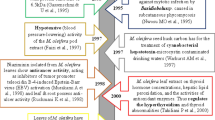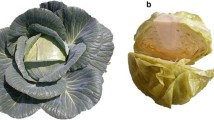Abstract
Turmeric (Curcuma longa L.) is valued for its secondary metabolites. The volatile compounds of essential oil play a major role for unique flavor in turmeric. As phyto constituents tend to be influenced by environment, the present study was taken up to analyze the interaction of genotype and environment on essential oils and to understand the distribution of its constituents among 15 turmeric genotypes, representing from major turmeric growing areas. Planting was taken up following Randomized Block Design (RBD) at three different locations of India i.e., ICAR-IISR (ICAR-Indian Institute of Spices Research), Regional Station, Appangala, Karnataka; Experimental Farm, ICAR-IISR, Kozhikode, Kerala, and farmers field, Perur, Coimbatore, Tamil Nadu. High essential oil content was recorded in Suvarna, SLP 389/1, Varna and Megha Turmeric 1. The genotype, Megha Turmeric 1 was found to be stable with high mean value for essential oil. Appangala was the favorable environment for high essential oil based on AMMI model. By Gas Chromatography—Mass Spectrometry (GC–MS) analysis, 16 volatile compounds were identified, among which, ar-turmerone & α-turmerone (32.63%), curlone (13.86%) and zingiberene (10%) were significant with a high mean area percentage. Acc. 849 and Narendra Haldi 98 genotypes which has unique flavour when compared to other genotypes were rich in major and minor compounds viz. zingiberene, β-sesquiphellandrene, 1,8-cineole and α-humelene. Principal Component Analysis (PCA) of each constituent revealed that the first three PCs together accounted for 80.5% of total phenotypic variation among the genotypes. The genotypes stable for essential oil and with different compositions of flavor constituents can be a chemotype and used for specific industrial requirement.




Similar content being viewed by others
Data Availability
Data is contained within the article.
References
Aarthi S, Suresh J, Leela K, Prasath D (2020) Multi environment testing reveals genotype-environment interaction for curcuminoids in turmeric (Curcuma longa L). Ind Crops Prod. 145:112090. https://doi.org/10.1016/j.indcrop.2020.112090
Adams RP (2007) Identification of Essential Oil Components by Gas Chromatography / Mass Spectrometry, 4th. Allured Publishing Corporation, Carol Stream
Akbar A, Kuanara A, Patnaikb J, Mishrac A, Nayak S (2018) Application of artificial neural network modelling for optimization and prediction of essential oil yield in turmeric (Curcuma longa L.). Comput Electron Agric 148:160–178. https://doi.org/10.1016/j.compag.2018.03.002
Akula R, Ravishankar GA (2011) Influence of abiotic stress signals on secondary metabolites in plants. Plant Signal Behav 6(11):1720–1731. https://doi.org/10.4161/psb.6.11.17613
Anandaraj M, Prasath D, Kandiannan K, Zachariah TJ et al (2014) Genotype by environment interaction effects on yield and curcumin in turmeric (Curcuma longa L.). Ind Crops Prod 53:358–364. https://doi.org/10.1016/j.indcrop.2014.01.005
Apisariyakul A, Vanittanakom N, Buddhasukh D (1995) Antifungal activity of turmeric oil extracted from Curcuma longa (Zingiberaceae). J Ethnopharmacol 49:163–169. https://doi.org/10.1016/0378-8741(95)01320-2
Aqeel U, Aftab T, Khan MMA, Naeem M (2023) Regulation of essential oil in aromatic plants under changing environment. J Appl Res Med Aromat Plants 32:100441. https://doi.org/10.1016/j.jarmap.2022.100441
ASTA (2010) Steam Volatile Oil in Spices. Official Analytical Methods of the American Spice Trade Association, Englewood Cliffs. Washington D.C., p 29
Avanço GB, Ferreira FD, Bomfim NS, de Souza Rodrigues PA, Peralta RM, Brugnari T, Mallmann CA, Filho B, Mikcha JMG, Machinski M Jr (2017) Curcuma longa L. essential oil composition, antioxidant effect, and effect on Fusarium verticillioides and fumonisin production. Food Control 73:806–813. https://doi.org/10.3390/plants10010044
Braga M, Leal P, Carvalho J, Meireles M (2003) Comparison of yield, composition, and antioxidant activity of turmeric (Curcuma longa L.) extracts obtained using various techniques. J Agri Food Chem 51:6604–6611. https://doi.org/10.1021/jf0345550
Bustamante MA, Michelozzi M, Barra Caracciolo A, Grenni P, Verbokkem J, Geerdink P, Nogues I (2020) Effects of soil fertilization on terpenoids and other carbon-based secondary metabolites in Rosmarinus officinalis plants: a comparative study. Plants 9:830. https://doi.org/10.3390/plants9070830
Chowdhury JU, Nandi NC, Bhuiyan MNI, Mobarok MH (2008) Essential oil constituents of the rhizomes of two types of Curcuma longa of Bangladesh. Bangladesh J Sci Ind Res 43(2):259–266. https://doi.org/10.3329/bjsir.v43i2.970
Ferreira LA, Henriques OB, Andreoni AA, Vital GR, Campos MM, Habermehl GG, de Moraes VL (1992) Antivenom and biological effects of ar-turmerone isolated from Curcuma longa (Zingiberaceae). Toxicon 30:1211–1218. https://doi.org/10.1016/0041-0101(92)90437-A
Garg SN, Bansal RP, Gupta MM, Kumar S (1999) Variation in the rhizome essential oil and curcumin contents and oil quality in the land races of turmeric Curcuma longa of North Indian plains. Flavour Fragr J 14:315–318. https://doi.org/10.1002/(SICI)1099-1026(199909/10)14:5%3c315::AIDFFJ838%3e3.0.CO;2-U
Gauch HG (1988) Model selection and validation for yield trials with interaction. Biometrics 44:705–715. https://doi.org/10.2307/2531585
Gounder DK, Lingamallu J (2012) Comparison of chemical composition and antioxidant potential of volatile oil from fresh, dried and cured turmeric (Curcuma longa) rhizomes. Ind Crops Prod 38:124–131. https://doi.org/10.1016/j.indcrop.2012.01.014
Jayaprakasha GK, Jena BS, Negi PS, Sakariah KK (2002) Evaluation of antioxidant activities and antimutagenicity of turmeric oil: a byproduct from curcumin production. Z Naturforsch 57:828–835. https://doi.org/10.1515/znc-2002-9-1013
Laokuldilok N, Utama-ang N, Thakeow PK (2015) Characterization of odor active compounds of fresh and dried turmeric by gas chromatography-mass spectrometry, gas chromatography olfactometry and sensory evaluation. Food Appl Biosci J. 3(3):216–230. https://doi.org/10.14456/fabj.2015.21
Leela NK, Tava A, John SP, Chempakam B (2002) Chemical composition of essential oils of turmeric (Curcuma longa L.). Acta Pharm 52:137–141
Li S, Yuan W, Deng G, Wang P, Yang P, Aggarwal BB (2011) Chemical composition and product quality control of turmeric (Curcuma longa L.). Pharm Crops 2:28–54. https://doi.org/10.2174/2210290601102010028
Maffei M, Scannerini S (2000) UV-B effect on photomorphogenesis and essential oil composition in peppermint (Mentha piperita L.). J Essent Oil Res 12:523–529. https://doi.org/10.1016/j.jphotobiol.2010.05.003
Mahattanatawee K, Goodner KL, Baldwin E (2005) Volatile constituents and character impact compounds of selected florida’s tropical fruit. Proc Fla State Hort Soc 118:414–418
Nair A, Amalraj A, Jacob J, Ajaikumar BK, Gopi S (2019) Non-curcuminoids from turmeric and their potential in cancer therapy and anticancer drug delivery formulations. Biomolecul 9(13):1–37. https://doi.org/10.3390/biom9010013
Naz S, Ilyas S, Parveen Z, Javed S (2010) Chemical analysis of essential oils from turmeric (Curcuma longa) rhizome through GC-MS. Asian J Chem 22(4):3153–3158
Negi PS, Jayaprakasha GK, Jagan Mohan Rao L, Sakariah KK (1999) Antibacterial activity of turmeric oil: a byproduct from curcumin manufacture. J Agric Food Chem 47:4297–4300. https://doi.org/10.1021/jf990308d
Pal K, Chowdhury S, Dutta SK, Chakraborty S, Chakraborty M, Pandit GK, Dutta S, Paul PK, Choudhury A, Majumder B, Sahana N, Mandal S (2020) Analysis of rhizome colour content, bioactive compound profiling and ex situ conservation of turmeric genotypes (Curcuma longa L) from sub- Himalayan terai region of India. Ind Crops Prod. 150:112401. https://doi.org/10.1016/j.indcrop.2020.112401
Patil AA, Sarmah R, Baruah AM (2016) Biochemical profiling of some prominent turmeric (Curcuma longa L) cultivars of northeast India. Indian J. Agric. Res. 50(5):421–427
Prasath D, Kandiannan K, Leela NK, Aarthi S, Sasikumar B, Babu KN (2019) Turmeric: botany and production practices. Hort Reviews 46:99–184
Prasath D, Krishnamurthy KS, Praveena R, Jayashree E, Leela NK, Sellaperumal C, Aarthi S (2022) Turmeric (extension pamphlet). Kozhikode, Indian Institute of Spices Research, p 25
Raina VK, Srivatsava S, Jain N, Ahmad A, Syamasundar KV, Agarwal K (2002) Essential oil composition of Curcuma longa L. cv. Roma from the plains of northern India. Flavour Fragr. J. 17(2):99–102. https://doi.org/10.1002/ffj.1053
Raina VK, Srivastava SK, Syamsundar KV (2005) Rhizome and leaf oil composition of Curcuma longa from the lower Himalayan region of Northern India. J Essent Oil Res 17:556–559. https://doi.org/10.1080/10412905.2005.9698993
Roth GN, Chandra A, Nair MG (1998) Novel bioactivities of Curcuma longa constituents. J Nat Prod 61:542–545. https://doi.org/10.1021/np970459f
Sandeep IS, Kuanar A, Akbar A, Kar B et al (2016) Agroclimatic zone based metabolic profiling of turmeric (Curcuma longa L.) for phytochemical yield optimization. Ind Crops Prod 85:229–240. https://doi.org/10.1016/j.indcrop.2016.03.007
Sestelo MF, Carrillo JM (2020) Environmental effects on yield and composition of essential oil in wild populations of spike lavender (Lavandula latifolia Medik). Agriculture 10(12):626. https://doi.org/10.3390/agriculture10120626
Singh G, Kapoor IPS, Singh P, de Heluani CS, de Lampasona MP, Catalan CAN (2010) Comparative study of chemical composition and antioxidant activity of fresh and dry rhizomes of turmeric (Curcuma longa Linn.). Food Chem Toxicol 48:1026–1038. https://doi.org/10.1016/j.fct.2010.01.015
Singh S, Rajesh BSS, Sahoo K, Subudhi E, Nayak S (2011) Chemical composition of turmeric oil (Curcuma longa L. cv. Roma) and its antimicrobial activity against eye infecting pathogens. J Essent Oil Res 23:11–18. https://doi.org/10.1080/10412905.2011.9712275
Tsai SY, Huang SJ, Chyau CC, Tsai CH, Weng CC, Mau JL (2011) Composition and antioxidant properties of essential oil from Curcuma rhizome. Asian J Art Sci 2(1):57–66
Tyagi AK, Prasad S, Yuan W, Li S, Aggarwal BB (2015) Identification of a novel compound (β-sesquiphellandrene) from turmeric (Curcuma longa) with anticancer potential: Comparison with curcumin. Investig New Drugs 33:1175–1186. https://doi.org/10.1007/s10637-015-0296-5
Usman LA, Hamid AA, George OC, Ameen OM (2009) Chemical composition of rhizome essential oil of Curcuma longa L growing in north central Nigeria. World J. Chem. 4(2):178
Zehra A, Choudhary S, Naeem M, Khan MMA, Aftab T (2019) A review of medicinal and aromatic plants and their secondary metabolites status under abiotic stress. J Med P. vol 7: pp 99–106.
Zhanga L, Yanga Z, Chena F, Su P, Chen D, Pana W, Fang Y, Dong C, Zheng X, Du Z (2017) Composition and bioactivity assessment of essential oils of Curcuma longa L. collected in China. Ind Crops Prod 109:60–73. https://doi.org/10.1016/j.indcrop.2017.08.009
Zobel RW, Wright MJ, Gauch JHG (1988) Statistical analysis of a yield trial. Agro J 80:388–393. https://doi.org/10.2134/agronj1988.00021962008000030002x
Funding
Funding was provided by Indian Council of Agricultural Research (ICAR), New Delhi, India.
Author information
Authors and Affiliations
Contributions
Aarthi S: Data curation, Conceptualization, Writing- Original draft preparation J Suresh: Supervision Ameena Premnath: Data curation NK Leela: Methodology D Prasath: Conceptualization, Reviewing and Editing
Corresponding author
Ethics declarations
Conflict of interests
The authors declare no competing interests.
Additional information
Publisher's Note
Springer Nature remains neutral with regard to jurisdictional claims in published maps and institutional affiliations.
Supplementary Information
Below is the link to the electronic supplementary material.
Rights and permissions
Springer Nature or its licensor (e.g. a society or other partner) holds exclusive rights to this article under a publishing agreement with the author(s) or other rightsholder(s); author self-archiving of the accepted manuscript version of this article is solely governed by the terms of such publishing agreement and applicable law.
About this article
Cite this article
Aarthi, S., Suresh, J., Premnath, A. et al. Genotype x environment interaction of essential oil by Additive Main effects and Multiplicative Interaction (AMMI) model and metabolomics based profiling of volatile constituents in turmeric (Curcuma longa L.). Genet Resour Crop Evol (2024). https://doi.org/10.1007/s10722-024-01983-8
Received:
Accepted:
Published:
DOI: https://doi.org/10.1007/s10722-024-01983-8




